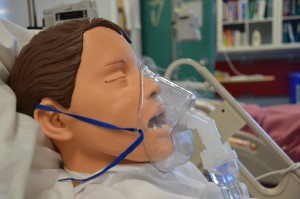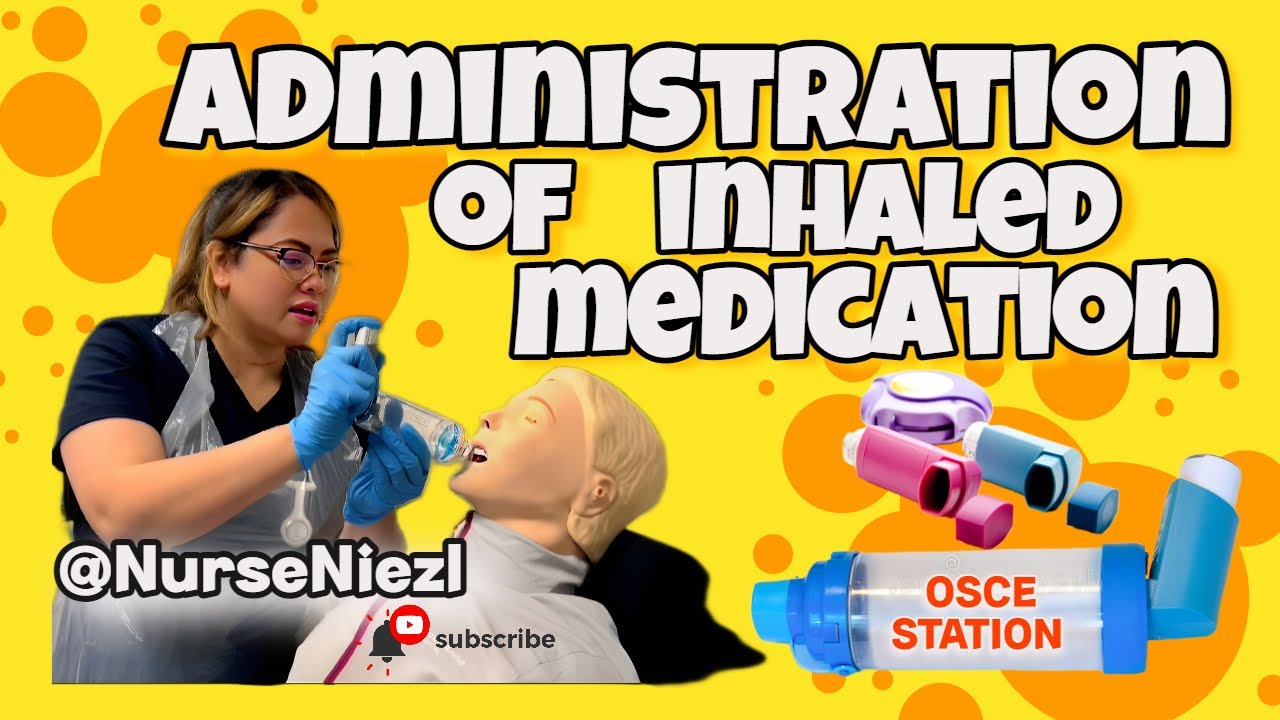Administration of Inhaled Medication (AIM) NMC OSCE Skill
Administration of Inhaled Medication (AIM) NMC OSCE Skill
 NMC OSCE Marking Criteria update on May 24th 2019 has included a new skill called “Administration of Inhaled Medication (AIM)”. This is a simple skill to demonstrate and you can deemed to be lucky if you gets this skill for your OSCE exam. Latest time limit for this skill demonstration is 12 minutes. Its more talking than doing. Error chances are very much less when compared to skills like Aseptic Non Touch Technique (ANTT). In this article we will see more about the skill of “Administration of Inhaled Medication (AIM)”.
NMC OSCE Marking Criteria update on May 24th 2019 has included a new skill called “Administration of Inhaled Medication (AIM)”. This is a simple skill to demonstrate and you can deemed to be lucky if you gets this skill for your OSCE exam. Latest time limit for this skill demonstration is 12 minutes. Its more talking than doing. Error chances are very much less when compared to skills like Aseptic Non Touch Technique (ANTT). In this article we will see more about the skill of “Administration of Inhaled Medication (AIM)”.
Administration of Inhaled Medication (AIM)
As like other skills, this skill can be explained in three phases ie pre procedural phase, procedural phase and post procedural phase.
Pre Procedural Phase
You will be given five minutes to read the scenario. Read the scenario properly. Look out for education aspects mentioned. Check whether the patient is using Inhaled medication for first time. Check for any diluent medication if mentioned. Inhaled medication device can be of three types, they are
Metered Dose Inhaler
In this preset amount of drug will be inhaled when the patient is pressing the canister.
Capsule Dose Inhaler
Some times, a capsule may be prescribed which you have to place inside inhaler, press the cracking switch and then the patient needs to inhale the medication.
Powdered Medication Inhaler
In this case medication will be in powdered form inside inhaler, which needs to be shaken well before usage. There is no canister to depress. Patient can directly inhale from the inhaler after shaking it well.
Usually, a metered dose inhaler is given for you to administer to patient. It will be clearly mentioned in the scenario.
You also need to check the medication type, dose, number of puffs needed to administer etc during this time.

Procedural Phase
Introductory phase
Check for scene safety, approach patient only after ensuring that scene is safe to approach.
You have to introduce yourself as the nurse taking care of the patient, after doing a handrub using seven steps of hand hygiene. There is no need to verbalize these seven steps as it is clearly mentioned in OSCE Marking Criteria.
Confirm Patient identity using three checks (Full Name, Date of Birth, Hospital Number)
Provide Privacy to patient.
Ask patient whether he/she has been resting for past 20 minutes.
Tell patient that you are there to administer his inhaled medication
Ask patient whether he has used inhaled medication before?
Ask patient about allergy and pain
After gaining patient consent, move on to gather things for administration of medication.
Assembling Things
You need to read aloud the prescription including person, drug, dose, route, date and time of administration. Ensure validity of prescription, signature of prescriber and legibility of prescription. If any of these pieces of information are missing, are unclear or illegible then the nurse should not proceed with administration and should consult prescriber.
Collect inhaler with mouthpiece, spacer device and gloves in a clean tray.
Do a proper hand washing using seven steps of hand hygiene at wash basin.
After wiping your hands/drying it, take the tray to patient side along with prescription.
Drug Administration
Ask patient whether he is comfortable and can you proceed with medication administration
Re confirm patient using three checks
Put on gloves and start explaining the parts of inhaler (Mouth Piece, Inhaler, Cannister, Spacer Device) and number of puffs to be taken.
Remove the mouthpiece cover from inhaler, shake 2 -5 seconds
Attach MDI into end of spacer device
Explain what the patient needs to do and clear doubts if any.
Ask the patient to exhale completely and then grasp spacer mouthpiece with teeth and lips while holding inhaler, ensuring that lips form a seal.
Ask the patient to tip head back slightly, inhale slowly and deeply through the mouth whilst depressing the cansiter fully.
(single breathe technique) – Instruct the patient to breathe in slowly for 2 – 3 seconds and hold their breath for approximately 10 seconds, then remove the device from the mouth before exhaling slowly through pursed lips.
(tidal breathe technique or multi-breathe technique) – If the person can’t hold their breath for more than 5 seconds, instructs the person to use ‘tidal breathing’ or ‘multi-breath technique’, breathing in and out steadily five times.
- Instructs the person to wait 30 to 60 seconds between inhalations (if same medication) or 2 to 3 minutes between inhalations (if different medication). Shakes the inhaler between doses.
- Ensures that the drug is administered as prescribed.
If you need to administer a different medication, you need to wait 2 – 3 minutes between inhalations.

Post Procedural Phase
Tell patient that you will clean the equipment, make it ready for next use and will come back
Clean the inhaler after putting a gloves with clinell wipes. Keep it aside to dry.
Do a hand rub, date and sign drug administration record.
Come back to patient, health educate patient about usage of metered dose inhaler if required.
Reassure the person that you will be around for 30 minutes and in case of any adverse reactions, to press call bell so that you can come back.
Open the curtains/blinds, do a hand rub using seven steps of hand hygiene and leave the room.
Key Points to be noted in Administration of Inhaled Medication
The important aspects are the following,
– Checking of prescription and reading it aloud
– At least one handrub using seven steps of hand hygiene
– Identification of patient (Twice)
– Administering exact dose (Number of puffs)
– Adequate pre administration explanation of procedure
– Correct administration technique
– Documentation of administered medication with date and sign
Conclusion
Administration of Inhaled Medication (AIM) is one of the simplest skils that you can demonstrate in your NMC OSCE exam. If you make sure that all of the key points are met, its of no big worries.
You can watch our demonstration video on youtube here
Hope this article helped you prepare for Administration of Inhaled Medication as a skill. If you liked this article and thinks that this need to be shared with your friends, please don’t hesitate to do so by clicking any of the sharing buttons given below.
